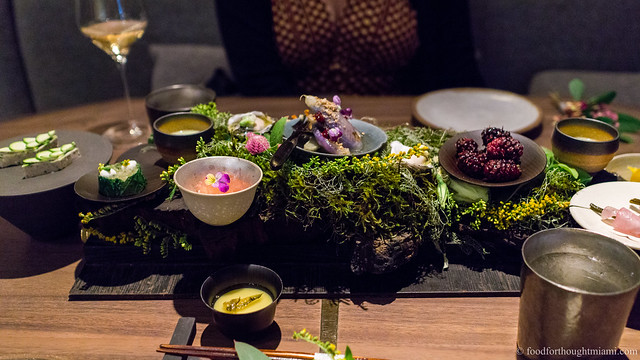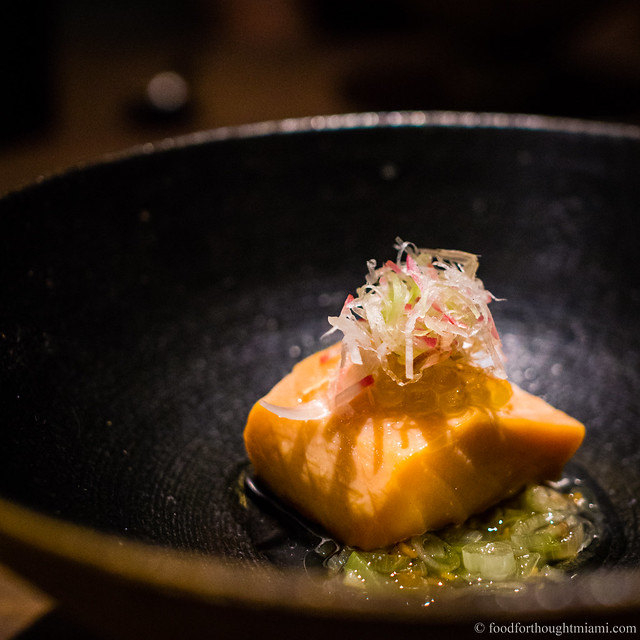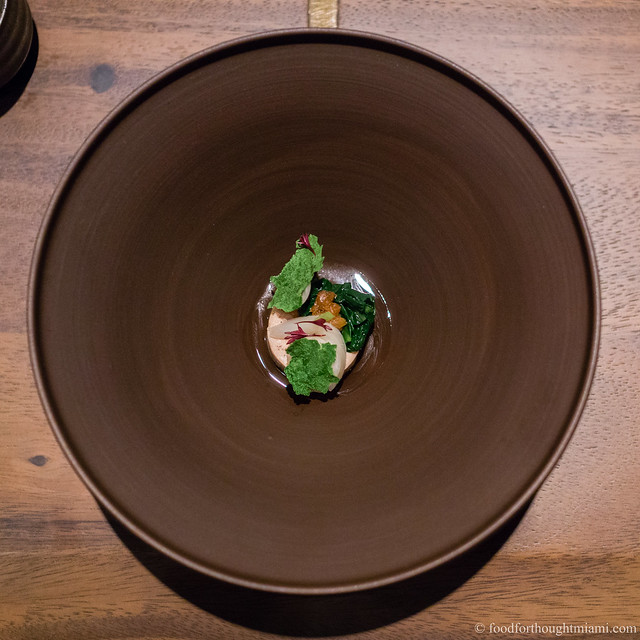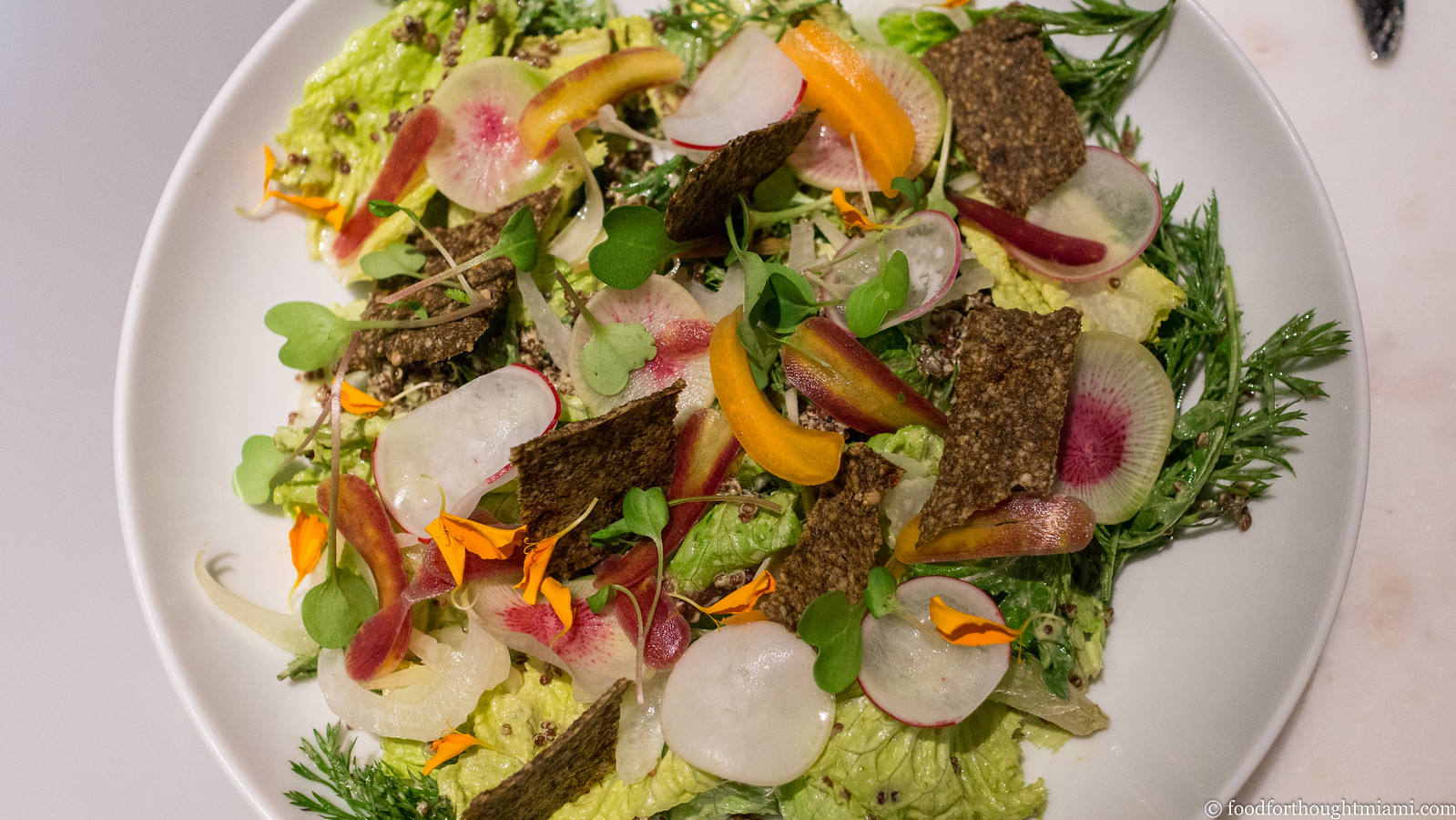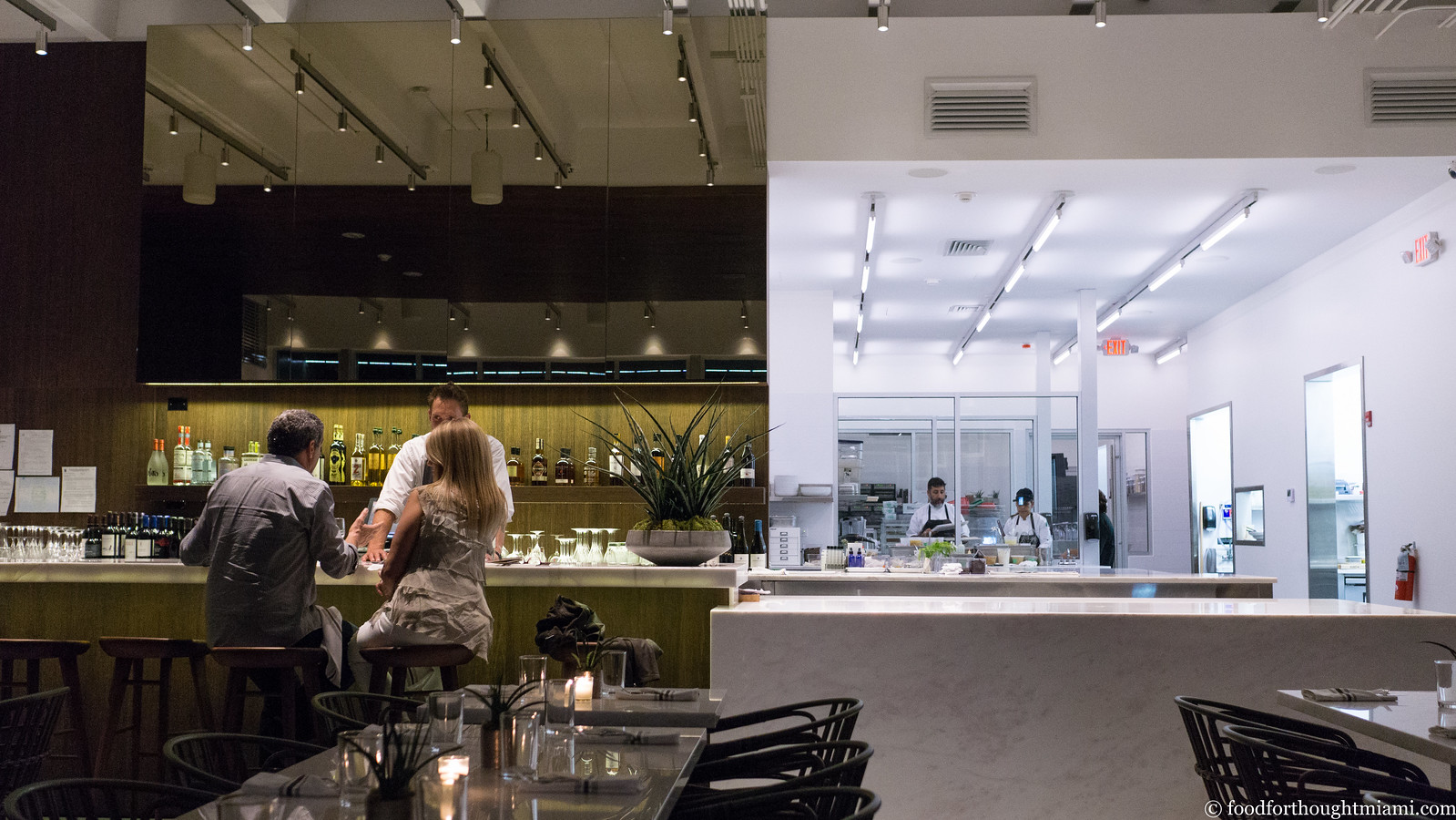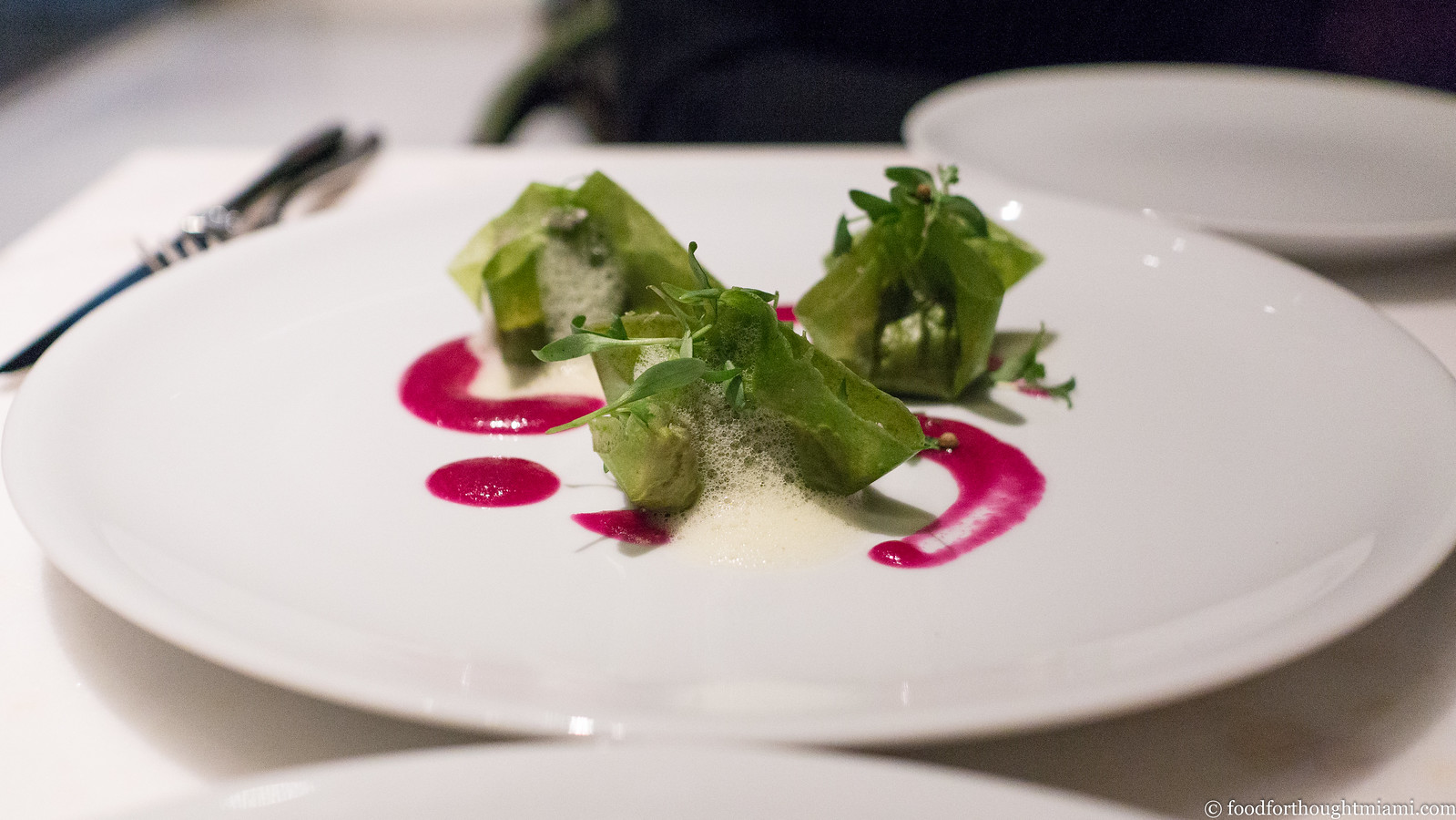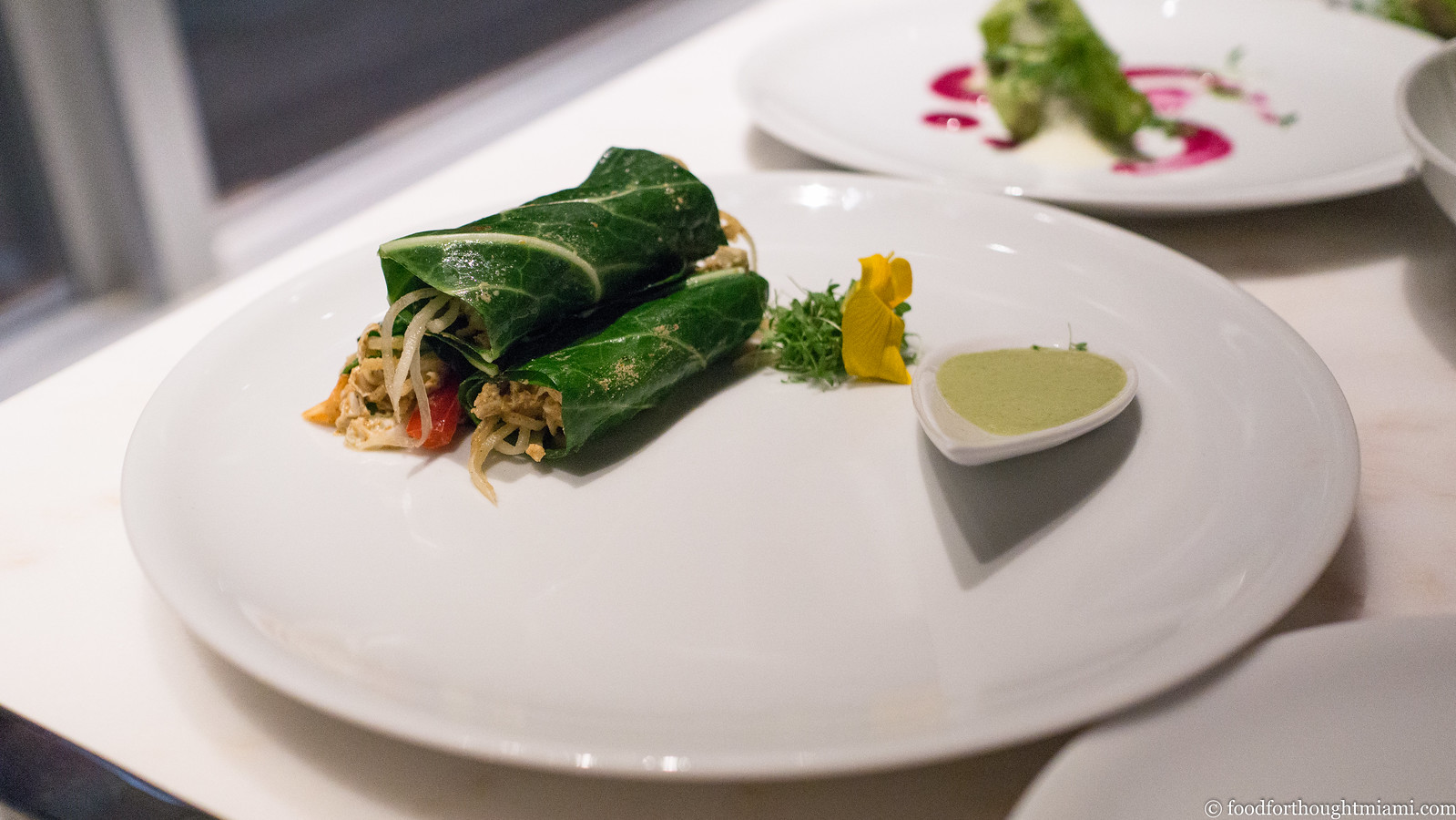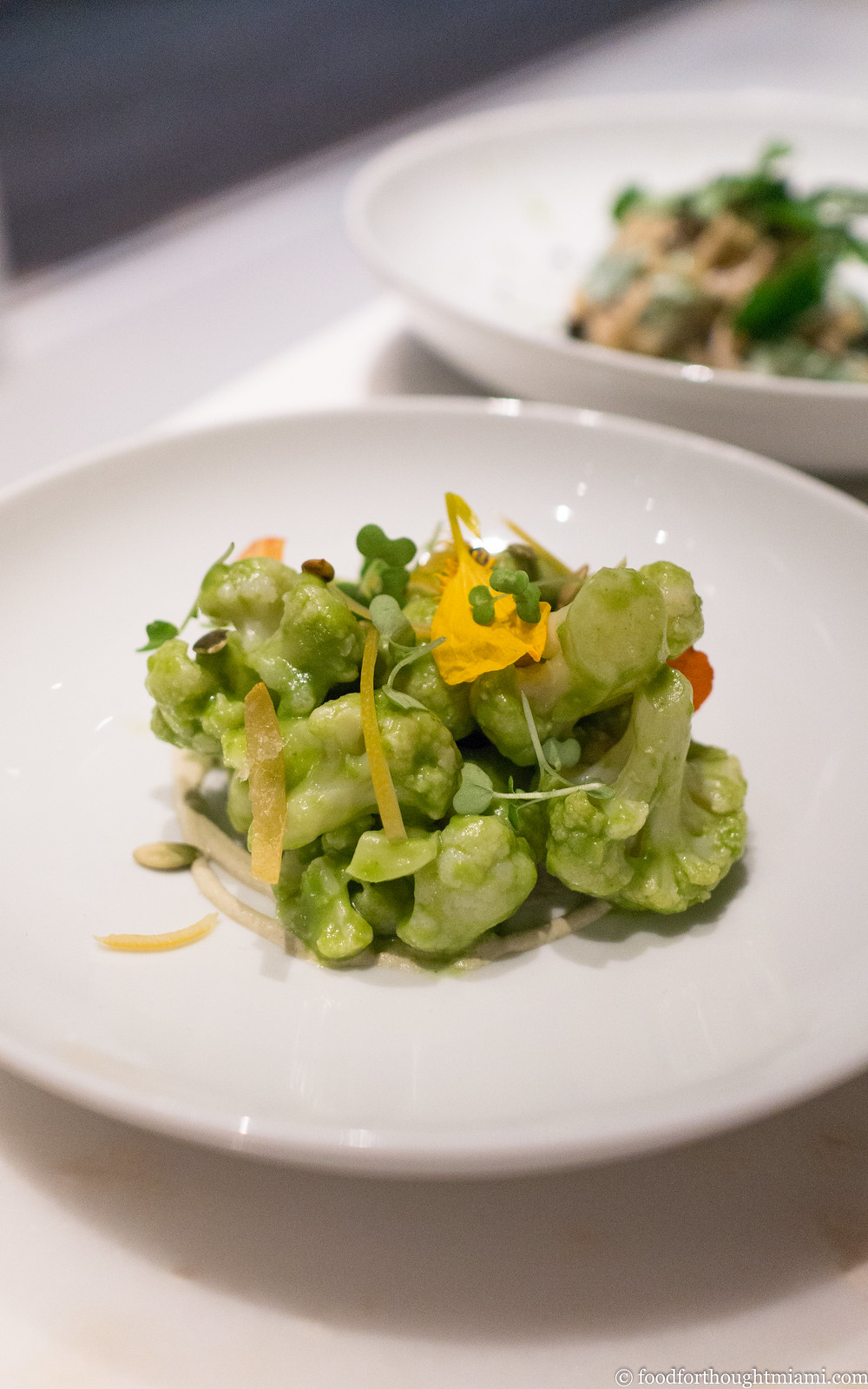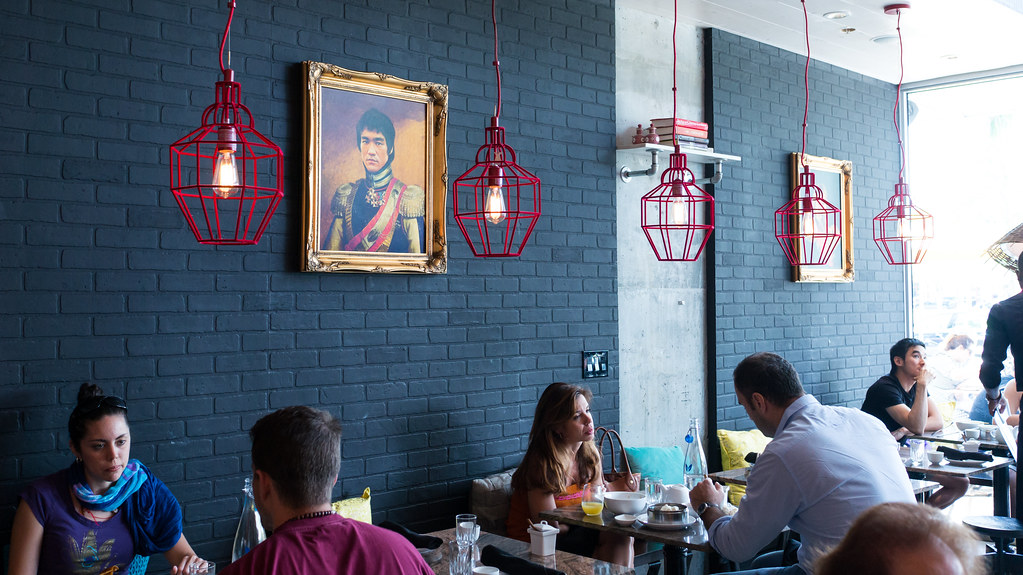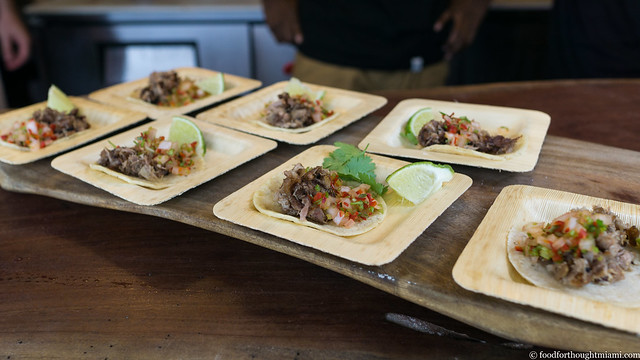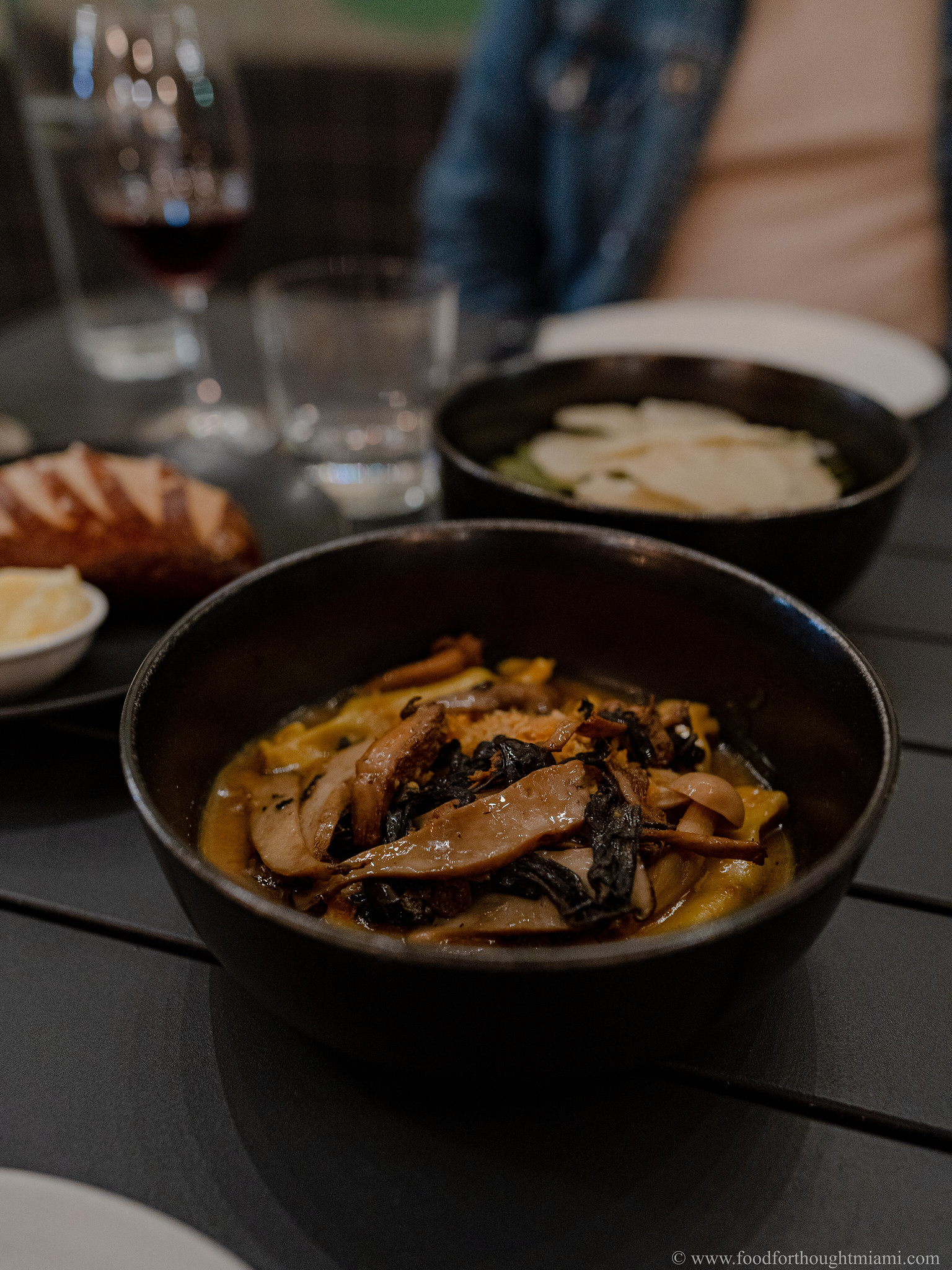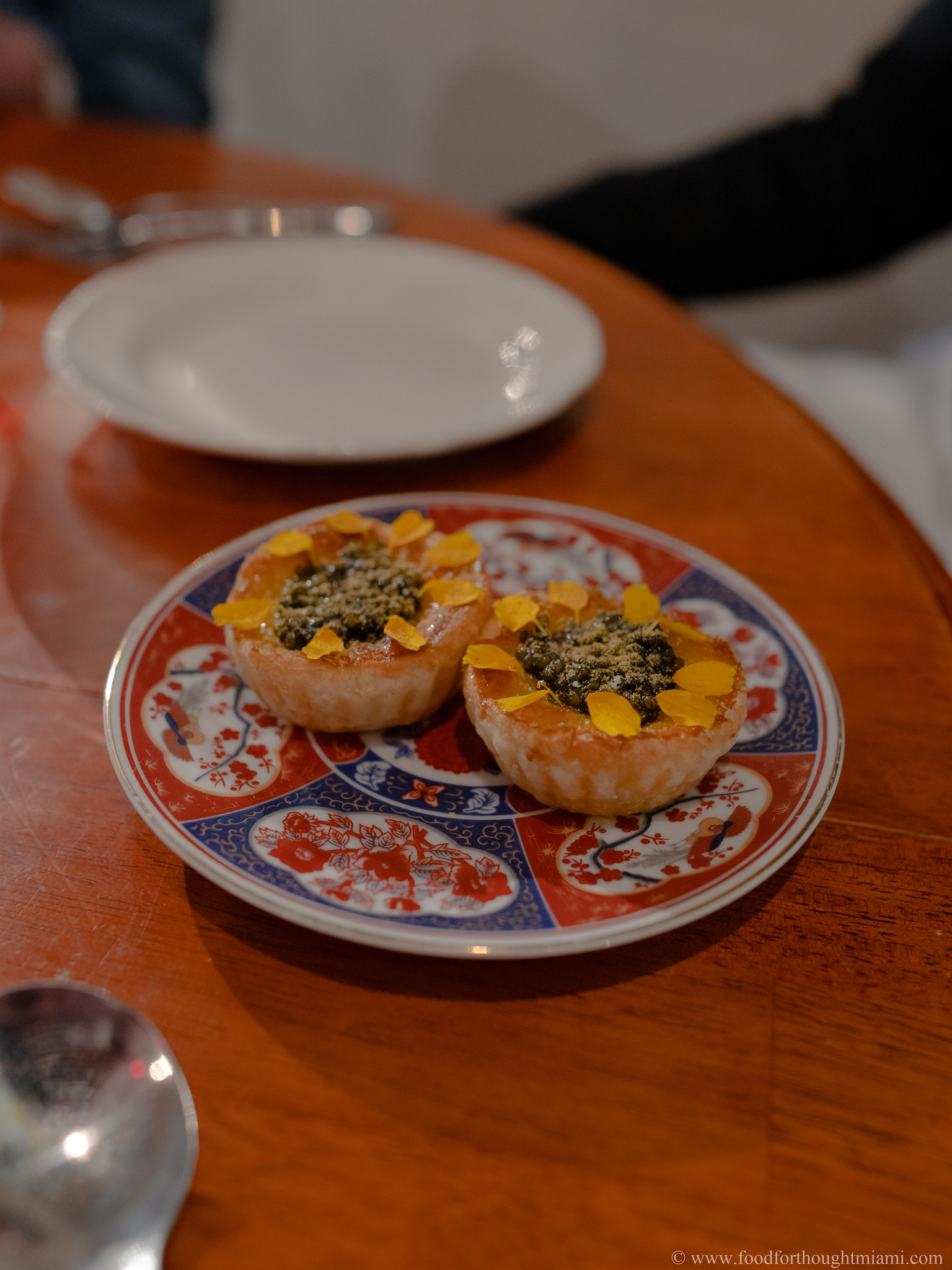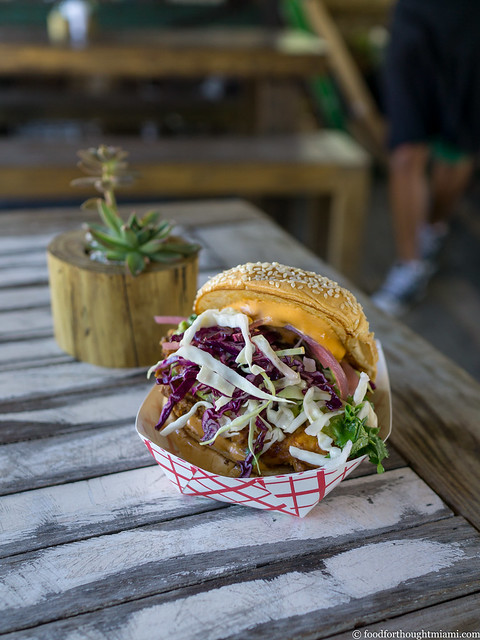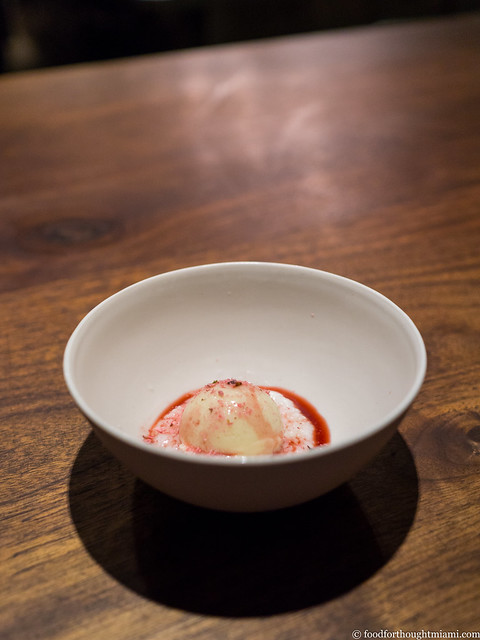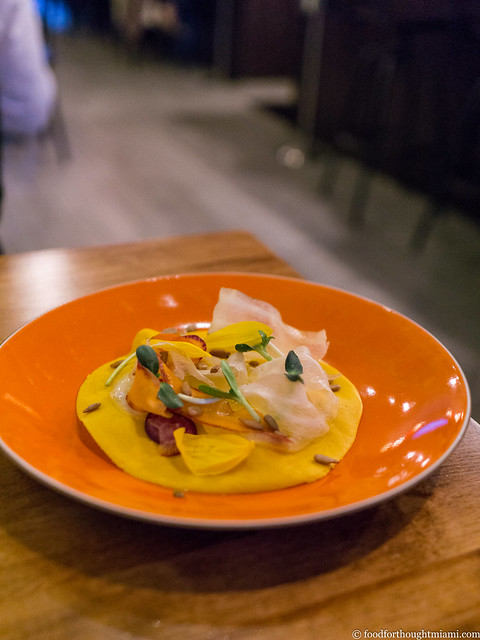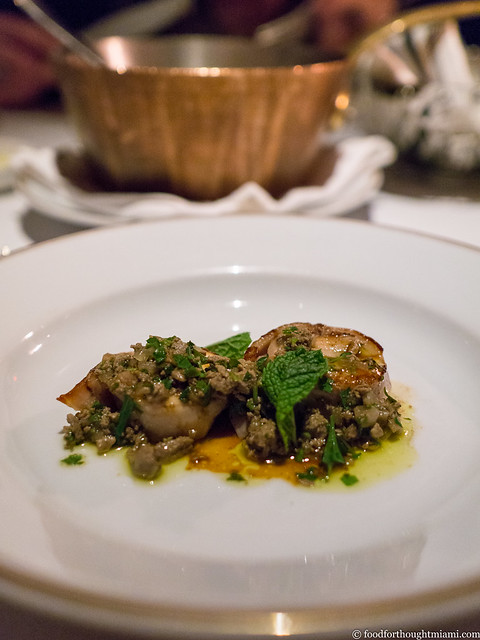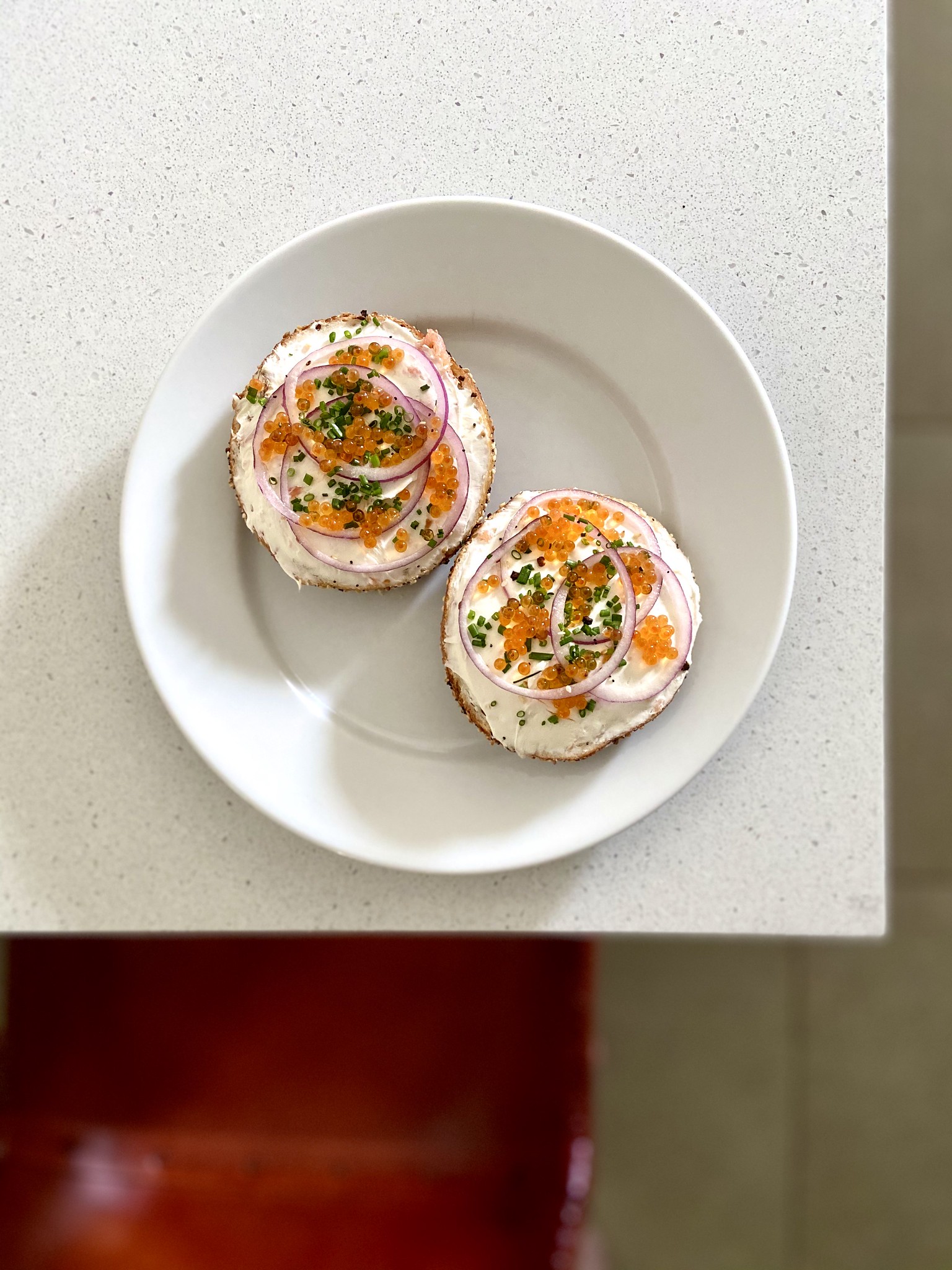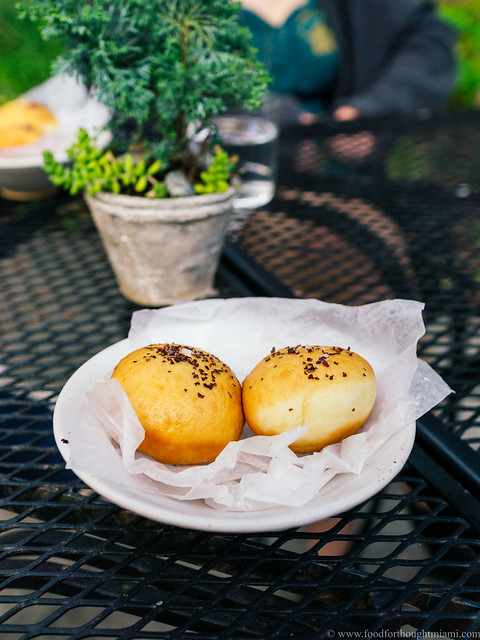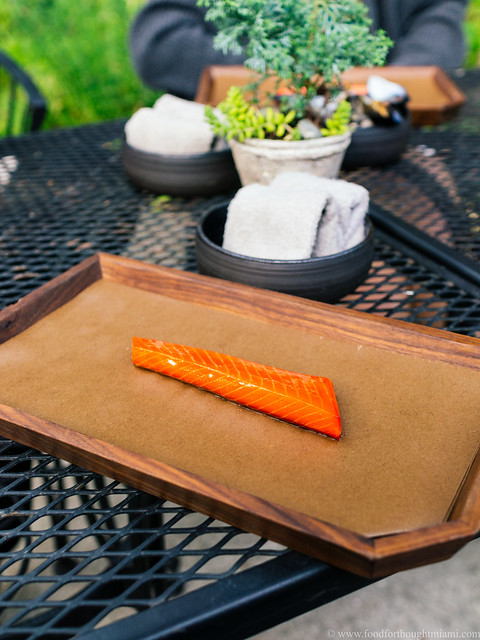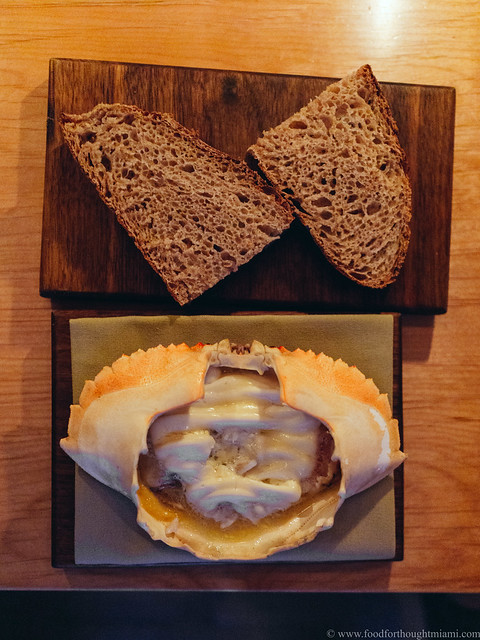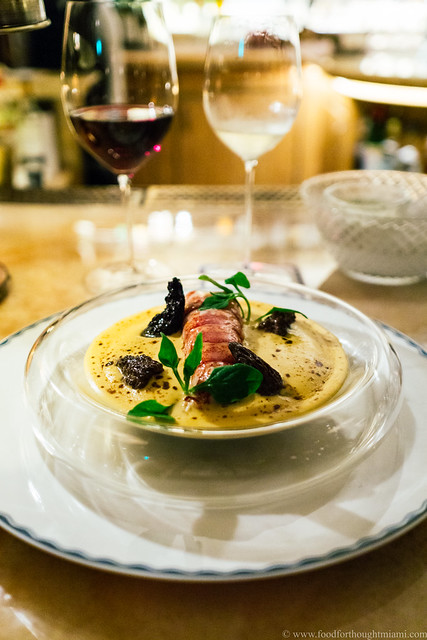
From friends, tour guides, and food and travel TV shows, we'd been conditioned to believe that San Sebastian was a kind of culinary Wonderland, with more Michelin stars per capita than possibly anywhere else on earth, and tapas bars lining the streets with riotous displays, each trying to top the next. Well, unlike the South Florida real estate market, Bernie Madoff's rate of return, and many other things that sound too good to be true, San Sebastian really is everything people say it is.
In early March, it was still off-season in San Sebastian, and we were regularly deluged with rain and even hail. But it was easy to see why San Sebastian becomes one of the great playgrounds of all Europe in the more temperate months. Its setting on the Bay of Biscay, situated on two massive, impossibly perfectly curved arcs of beach (Zurriola to the east and La Concha to the west), with hills rising up around either side, is almost ridiculously picturesque. And the sheer abundance, quality and variety of the pintxos (the Basque variant on tapas) to be found in such a multitude of local bars is truly staggering indeed. It really is much like being in Willy Wonka's Chocolate Factory, but without the risk of
blowing up into a gigantic blueberry like Violet Beauregard ("Stop. Don't.").
Though we had a couple high-end restaurant meals already booked before we came, we saved a couple days for sampling the pintxos of San Sebastian. It took us a little practice to navigate the etiquette of pintxos-eating. In some places you'd just ask for a plate and serve yourself, while in others the system was point and ask. Most bars have hot items that aren't displayed but are listed somewhere, usually on a board or occasionally on a menu, which have to be ordered. These were often some of the best items, notwithstanding the incredible displays of cold items laid out on the bars. For locating and researching these places, I found the website,
Todopintxos, to be a very useful resource. The
Hotel Villa Soro, about a 10-minute walk from the Barrio Gros, made a great home base for exploring San Sebastian.
The following are my notes from tours of the Parte Vieja (the old quarter, on the west side of town) and the Barrio Gros (newer part of town on the east side). There are literally dozens of places we did not get to, and it seems you could devote a happy lifetime to investigating each bar's specialties.
PARTE VIEJA
Bar Aralar - not particularly on any recommended list, this just happened to be open and in the right spot for us as the rain started coming down especially furiously. Yet it's a great example of what is so wonderful about San Sebastian. We were just looking for someplace to dry out for a couple minutes, ducked through the door, and were greeted with a tableau at the bar of maybe a couple dozen different brightly colored pintxos, a couple gleaming chrome beer taps, and a dozen hams hanging from the ceiling. The tuna-stuffed piquillo pepper was nice, as was a plump artichoke wrapped in bacon. A pintxo topped with a vibrant greenish white seafood spread tasted mostly of pickles, and I couldn't make out what else was in it. A very old-school place, where the bartender simply asks whether you want a small plate or a large plate so as to take items for yourself, and then charges on the honor system as to how many pintxos you had. Clearly a spot that has its regulars - it was amusing to watch as the bartender began to pour drinks for a few people as soon as they'd entered the door, before they'd uttered a word.
Gandarias Taberna - a warm pintxo of queso cabra wrapped with bacon was delicious; even better was one described as "milhojas de manitas y hongos", a layered concoction of shredded pigs' trotter meat and thin slivers of porcini mushroom. A brochette of cordero (lamb) was only OK, as was a pintxo topped with angulas (baby eels) and piquillo. They had a large selection of wines by the glass with all of them held in one of those high-tech Enomatic dispensers.
La Cepa - we caught the tortilla with bacalao as it was coming from the oven, and it was absolutely delicious. A little sampler of their chorizo was also excellent. The "gabilla," a croqueta type thing with big chunks of pork, serrano ham, and cheese, didn't do it for me. We should have taken the hint from the chorizo, as their specialty seems to be their Jabugo ham products.
La Cuchara de San Telmo - this place had been recommended by numerous sources and perhaps our expectations were too high, or perhaps we ordered poorly. It's a shoebox of a place, and difficult to find, with a barely discernable sign, and a street address on the "Plazuela del Valle Lersundi" which perhaps ought to be called a "Plazuelita" as it's not much more than a tiny indentation off Calle 31 de Agosto. Once inside there's a narrow, drafty bar area with room for about 8 place settings and at the back of the room a tiny, roughly 4'x8' kitchen. More contemporary in approach, everything is made to order. A canelon de morcilla was pretty good, the pasta filled with a rich oozy blood sausage, and the dish brightened up with a stripe of an herbaceous green sauce. The problem I had was that pretty much everything we ordered had almost the exact same presentation. The foie with manzana brought a seared hunk of foie gras served over a bed of apple puree, with again the same stripe of green sauce; and then a duck breast (slightly overcooked and tough) came over a bed of
orange puree, with yet again the same green stripe of sauce. Any one of them individually I would have thought were good, but when ordered together gave the impression of a one-trick pony. Again, maybe just a case of poor ordering.
BARRIO GROS
Aloña Berri - perhaps in contast to La Cuchara de San Telmo, I thought Aloña Berri was absolutely everything it was cracked up to be. They describe themselves as "alta cocina en miniatura" and the description is apt. It seems almost absurd to call a one-bite item a "dish," but many of Aloña Berri's creations are so remarkably layered and architectural both in flavor and literal structure that it seems appropriate. These were some truly awe-inspiring and delicious things.

This is a pintxo that came in an Asian soup spoon, one bite, more than a half-dozen components. From bottom to top, a puddle of creamy confited bacalao, topped with a smooth eggplant puree, hollandaise sauce, quail egg, aioli, trout roe, crispy fried spinach leaf, and a sliver of fried purple potato. Beautiful and delicious.

This one was possibly even more impressive. Mackerel, stuffed with foie gras and glazed with what I believe was a pan sauce bolstered with some vinegar, on top of which is balanced a long sliver of fried leek, sprinkled upon which are various salty, sweet and other flavor components - green herb powder, demerara sugar, trout roe ... you fold the sliver of leek upon itself and eat the whole thing, getting the sensations of each of the powders as you find them. All of which is to say nothing of the combination of the rich oily mackerel with the rich oily foie, a great take on a mar y montaña similar to the combination of eel and foie you see in some higher-end Japanese restaurants these days.
Bar Bergara - Bergara is a much more straight-ahead kind of style than Aloña Berri but everything we had was quite good, including a pintxo topped with juicy sweet diced tomatoes and a scatter of slivered fried onions, another with a bacalao "meatball" and a similar topping of fried onions, and one topped with salad rusa, shredded hard-boiled egg and a shrimp on top.
Casa Senra - when you see more than a half dozen different croquetas listed on the menu, including with clams and green sauce and with chipirones (baby squid), the clear message is "Get the croquetas". By an accident of translation we got the morcilla croquetas rather than the almejas I had sought, but they were still very good, scooped using an ice cream scoop, lightly crispy outside, tender and oozy inside, studded with bits of sausage. I wasn't aiming for the croquetas de morcilla because we'd also ordered the "morcillitas," a skinny home-made blood sausage that was creamy and redolent with spice, served with a green garlic olive oil emulsion and piquillo peppers. A bocata of fried eggplant, sauteed onions, bacon and cheese was also very satisfying.
The amazing thing to me is that for every place we tried, there are probably a half dozen we missed. Even more amazing, for every pintxo we tried at each of those places, there were probably a dozen or more that we skipped. Consistent 12-13% return, year after year after year? Don't believe it. San Sebastian, culinary mecca? Believe it.
Bar Aralar
Calle Puerto 10
San Sebastian
943 42 63 78
Gandarias Taberna
Calle 31 de Agosto 23
San Sebastian
943 42 63 62
La Cepa
Calle 31 de Agosto 7
San Sebastian
943 42 63 94
La Cuchara de San Telmo
Plazuela del Valle Lersundi
San Sebastian
Aloña Berri
Calle Bermingham 24
San Sebastian
943 29 08 18
Bar Bergara
Calle General Artexte 8
San Sebastian
943 27 50 26
Casa Senra
Calle San Francisco 32
San Sebastian
943 29 38 19
